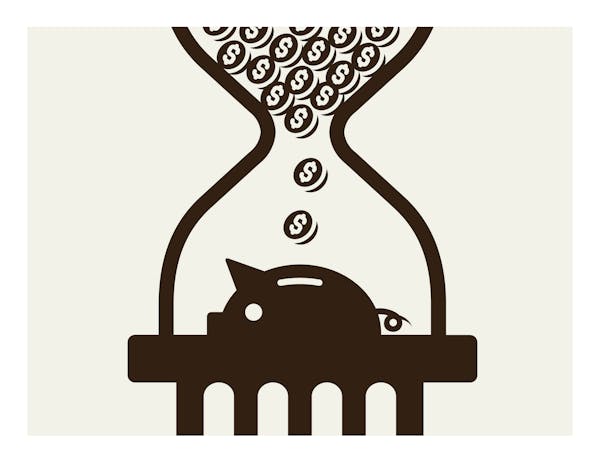Is college still worth the cost? And which fields of study really pay off?
A new interactive tool by Minnesota labor economists is trying to answer those questions in detail by tracking the wages — and student debt — Minnesotans have seven years after earning college degrees or professional certificates in 2015.
The newest tool created by Minnesota's Labor Market Information Office lets users compare the actual employment and wage outcomes for graduates of Minnesota postsecondary institutions depending on their degree, major and profession.
It also lets users calculate just how big of a bite student loans, which average $23,074 in Minnesota, and basic living expenses will take from annual paychecks in various professions.
In the end, users can spy the potential gross and net wages that a certain field of study might produce seven years after they graduate. The tool is an upgrade from 2020, when Minnesota's Department of Employment and Economic Development (DEED)'s Labor Market Information Office created a tool that tracked wages for just two years.
The seven-year tracking is a big change from tools used by most colleges.
No one else tracks wage outcomes for seven years. And no one else lets you input your personal student loan data into their wage calculators, said Lisa Mohr, career services coordinator at St. Cloud Technical and Community College, which has 4,800 students.
The deep dive into the data comes with pop-up fact charts and is much more instructive than just telling parents that their child will earn more the longer they stay in school, Mohr said.
"DEED is the leader with this. They're putting in a whole layer of data we have never put in," she said. "We don't talk about debt. We don't talk about loan payments, or monthly payments or anything like that. So they put a whole bunch of factors together, which is nice. I think the colleges and universities will follow suit."
That's music to the ears of Luke Greiner and Carson Gorecki, the state labor economists and researchers who developed the interactive data base.
Their vision was to help students, parents and career counselors see which fields of study and careers might lead to solid incomes "that let you have a life," they said.
"We [wanted a] dashboard that puts all the options in one place so [students] can figure out whether or not they can afford to live independently based on" their chosen field of study and degree, Gorecki said.
"If analysis is your jam, you are going to love this," added Greiner.
Without a dashboard and the ability to plug in your options, trying to understand the economics of selecting a college or a career "is like throwing darts at a dartboard."
Parent Sue Spiese wished she had a tool like this when her four adult children — including a son who recently finished a computer engineering degree at the University of Minnesota and is deciding whether to pursue graduate school — were making decisions in high school.
"This is the missing link. Typically parents go into this without a clue," said Spiese, a theater costume designer and dance teacher. "I hear from so many parents [asking] how does a kid know when they're 18 what they're going to do for the rest of their lives?"
Tools like this one can help steer the decisions, she said after a dive into DEED's site, which revealed some expected but also surprising facts to her.
Predictably, Minnesotans with graduate degrees earned 1.74 times the salaries earned by those graduating from certificate programs. Medicine ($275,237), dentistry ($192,225), and engineering-related fields ($192,225) topped the salary list.
Teaching aides with associate degrees earned just $32,000 a year after seven years of experience. Construction workers who completed certificates earned a median $41,000 a year, while construction managers with bachelor's degrees earned a median $101,000 last year.
Unsurprisingly, humanities and performing arts majors did not score as high on the spectrum and tended to have negative net incomes seven years after graduation when adjusted for student loan debt and inflation. It's the same with cosmetology and general sales and marketing programs.
"That for me was my gee whiz," said Greiner, the state economist.
Spiese knows that firsthand, though.
"To actually break even or make something of dance, you have to be involved in one of the very few, big guys like the New York City Ballet Company," she said. "Everything else? It's really a lot of volunteer time. It's sad. You cannot survive on dance."
The tool shows decent paychecks are widely available and don't always require a graduate degree, Mohr tells St. Cloud students pursuing the construction trades and various industry certificates.
The database offered proof. Minnesotans holding associate degrees in fire protection earned $86,537 gross ($46,196 net). Those with professional certificates in computer science racked up a median $117,842 in wages last year (or $74,471 net).
Similarly, certified civil engineer technicians earned a median $93,520 gross (or $50,147 net). Certified plumbers earned a hearty $90,225 ($46,854 net). Meanwhile, certified heavy-industrial equipment-maintenance workers across the state made $84,492 gross (or $41,120 net).
"This data really outlines the return on investment you can receive depending on your major and [degree] level," Gorecki said.
Gorecki and Greiner are now on a mission to educate others about their earning options and will showcase their database to officials at 53 state workforce centers, the Minnesota Rural Education Association, community colleges and schools in St. Cloud, the Perkins Consortium, Silver Bay, Monticello and elsewhere.
